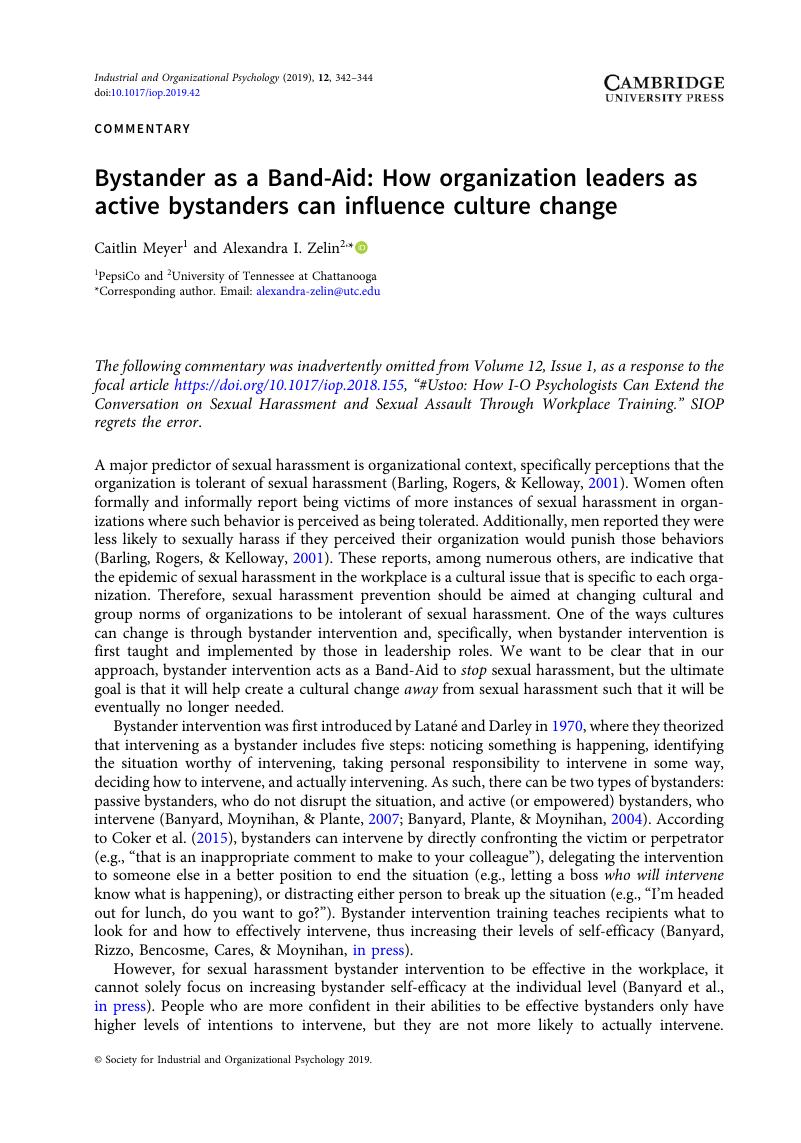Crossref Citations
This article has been cited by the following publications. This list is generated based on data provided by Crossref.
Zelin, Alexandra I.
and
Magley, Vicki J.
2020.
Handbook of Interpersonal Violence and Abuse Across the Lifespan.
p.
1.
Zelin, Alexandra I.
Branda, Brittany
and
Tino, Riley
2022.
How Do You Define Sexual Harassment?: Why Context Matters.
Violence Against Women,
Vol. 28,
Issue. 14,
p.
3438.
Burke-Smalley, Lisa A.
Evans, W. Randy
and
Zelin, Alexandra I.
2022.
Voices of abused workers: Implications for mitigating worker mistreatment.
Business Horizons,
Vol. 65,
Issue. 3,
p.
315.
Zelin, Alexandra I.
and
Magley, Vicki J.
2022.
Handbook of Interpersonal Violence and Abuse Across the Lifespan.
p.
3941.
Aitken, Debbie
Shamaz, Heen
Panchdhari, Abha
Afonso de Barros, Sonia
Hodge, Grace
Finch, Zac
and
George, Riya Elizabeth
2023.
Twelve tips for developing active bystander intervention training for medical students.
Medical Teacher,
Vol. 45,
Issue. 8,
p.
822.
Evans, W. Randy
Mullen, Deborah M.
and
Burke-Smalley, Lisa
2023.
Coworker abuse in healthcare: voices of mistreated workers.
Journal of Health Organization and Management,
Vol. 37,
Issue. 2,
p.
236.
Jennings, Laura
Zhao, Kun
Faulkner, Nicholas
and
Smith, Liam
2024.
Mapping bystander intervention to workplace inclusion: A scoping review.
Human Resource Management Review,
Vol. 34,
Issue. 2,
p.
101017.
Higgins, Kieran
2024.
Designing equity, diversity, and inclusion training for postgraduate parasitologists.
Trends in Parasitology,
Vol. 40,
Issue. 3,
p.
197.



